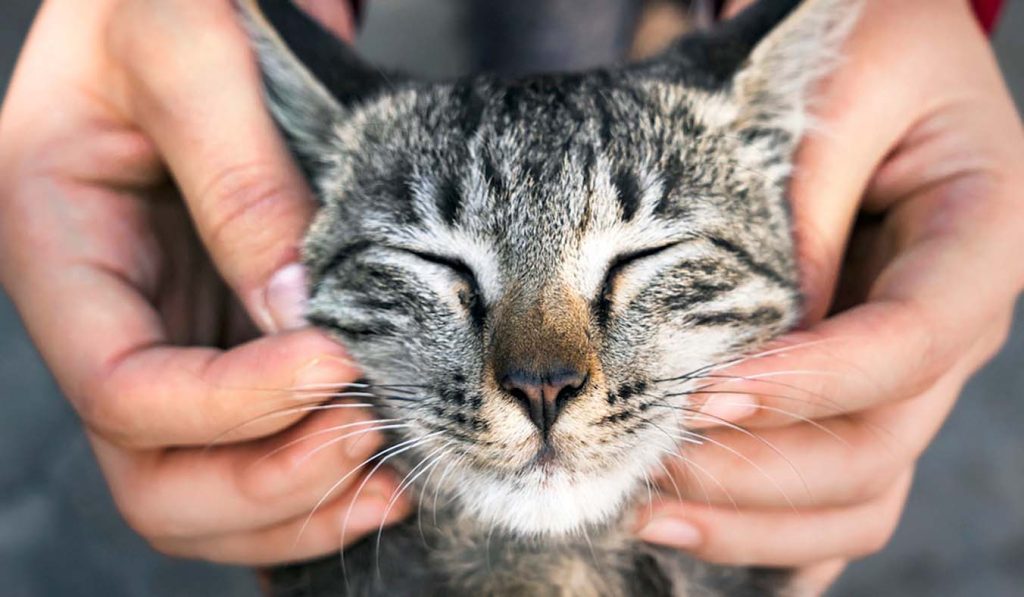Cat allergies can be a significant concern for many pet owners, causing discomfort and inconvenience. We’ll delve into the topic of cat allergies, exploring whether cats can cause allergies, the symptoms of cat allergies, common cat allergens, and the best methods for avoiding allergens.
The Truth Behind Cat Allergies: Unveiling the Culprits
In the perennial debate surrounding cat allergies, a common misconception persists: it’s the cat’s fur that’s to blame. However, delving deeper into the realm of allergens reveals a more nuanced truth. Yes, cats can indeed incite allergic reactions in susceptible individuals, but the source of the allergy lies not in the fur itself, but rather in a trifecta of proteins lurking within the feline’s domain.
Picture this: a seemingly innocuous grooming session unfolds as your feline friend meticulously tends to its fur, diligently ensuring every strand is pristine. Little do we realize, it’s during this fastidious process that the stage is set for allergic havoc. With each lick and nibble, proteins from the cat’s saliva are unwittingly transferred onto its fur, serving as unsuspecting carriers of allergic potential.
But that’s not all. Enter urine and dander – two additional repositories of allergenic proteins. As the cat goes about its daily routines, these microscopic skin flakes and urinary remnants join the fray, adding fuel to the allergic inferno. With each shake of the fur and innocent stretch, these allergens are dispersed into the air, ready to wreak havoc on unsuspecting immune systems.
The consequences of this allergen dissemination can be far-reaching. For those predisposed to cat allergies, exposure to these airborne irritants can provoke a litany of symptoms. From the familiar sneezing fits and nasal congestion to more insidious manifestations like itchy, watery eyes and skin rashes, the toll of cat allergies can be profound.
Moreover, for individuals with underlying respiratory conditions such as asthma, the stakes are raised even higher. Inhalation of cat allergens can precipitate asthma attacks, exacerbating symptoms and posing significant health risks. Thus, the impact of cat allergies extends beyond mere discomfort, permeating into the realm of potential respiratory compromise.
Armed with this understanding, the path to effective management of cat allergies becomes clearer. By recognizing the role of specific proteins in saliva, urine, and dander as primary instigators of allergic responses, individuals can implement targeted strategies to minimize exposure and mitigate symptoms. From stringent grooming practices for feline companions to meticulous cleaning routines within the home, a comprehensive approach is key to fostering a harmonious coexistence between allergic individuals and their beloved pets.
In essence, while cats may indeed harbor the potential to incite allergic reactions, knowledge and proactive measures can empower individuals to navigate the complexities of cat allergies with confidence. By addressing the root cause – the insidious trio of allergenic proteins – and implementing tailored strategies for allergen avoidance, allergic individuals can forge a path towards a life enriched by the companionship of their feline friends, free from the shackles of allergic discomfort.
Navigating the Maze of Cat Allergy Symptoms

Cat allergies, while often underestimated, can manifest in a myriad of ways, ranging from mild inconveniences to potentially life-altering complications. Here’s a detailed exploration of the diverse symptoms that may signal a cat allergy:
- Sneezing: A seemingly innocuous reflex, yet a telltale sign of the immune system’s skirmish with cat allergens. Each sneeze represents the body’s attempt to expel these irritants from the nasal passages, offering a fleeting respite from the relentless assault.
- Runny or Stuffy Nose: The nasal battlefield becomes a battleground of conflicting sensations – a perpetual tug-of-war between the incessant drip of nasal discharge and the suffocating congestion that ensues. Breathing becomes a chore, as cat allergens infiltrate the sinuses, wreaking havoc on respiratory comfort.
- Itchy, Watery Eyes: Eyes, once windows to the soul, now bear the brunt of allergic onslaught. An incessant itchiness plagues the delicate ocular tissues, while tears flow ceaselessly in a desperate attempt to flush out the intruders. Vision becomes blurred, obscured by a veil of allergic discomfort.
- Skin Rash or Hives: The skin, often overlooked in the context of cat allergies, becomes a canvas for allergic expression. Raised welts and angry red rashes emerge, marking the battleground where immune cells clash with cat allergens. Each itch serves as a grim reminder of the body’s relentless struggle against perceived threats.
- Coughing or Wheezing: The respiratory system, already besieged by cat allergens, succumbs to spasms of coughing and wheezing. Each breath becomes a laborious endeavor, punctuated by wheezes reminiscent of a strained symphony. The airways constrict, suffocating under the weight of allergic inflammation.
- Difficulty Breathing: A sense of suffocation pervades as the chest tightens, constricted by the invisible chains of allergic reaction. Each inhalation is a battle against resistance, as cat allergens encroach upon the lungs, impeding the flow of life-giving oxygen. Breathing becomes a conscious effort, a struggle against the relentless tide of allergic assault.
- Asthma Attacks in Individuals with Asthma: For those already burdened by the yoke of asthma, cat allergens pose an even greater threat. Asthma attacks loom ominously on the horizon, triggered by the mere presence of cat allergens in the environment. Each wheeze becomes a harbinger of impending respiratory distress, a reminder of the delicate balance between health and vulnerability.
In the face of such diverse and potentially debilitating symptoms, the impact of cat allergies cannot be understated. From the nasal passages to the lungs, from the eyes to the skin, cat allergens spare no quarter in their assault on the human body. Yet, armed with knowledge and awareness, individuals can navigate the maze of cat allergy symptoms with resilience and determination, forging a path towards relief and comfort in the face of allergic adversity.
Exploring the Culprits: Unveiling Common Cat Allergens
Diving deeper into the realm of cat allergies unveils a trio of potent adversaries lurking within the feline domain: proteins nestled within their saliva, urine, and dander. These microscopic entities, though imperceptible to the naked eye, wield formidable allergic potential, permeating the environment and posing a formidable challenge for sensitive individuals.
Saliva Proteins: As cats engage in fastidious grooming rituals, their saliva becomes a reservoir of allergenic proteins. With each languid lick and meticulous nibble, these proteins coat the fur, setting the stage for allergic reactions. Once airborne, they can settle on surfaces throughout the home, transforming innocuous spaces into battlegrounds for allergic skirmishes.
Urine Proteins: Beyond saliva, cat urine serves as another repository of allergenic proteins. Whether marking territory or simply answering nature’s call, cats unwittingly disseminate allergens with each urinary deposit. These proteins can linger in the environment, clinging to fabrics, carpets, and upholstery long after the deed is done, perpetuating allergic discomfort for unsuspecting individuals.
Dander: Tiny flakes of skin shed by cats, known as dander, represent yet another source of allergenic proteins. As cats go about their daily routines, dander becomes airborne, dispersing allergens far and wide. From carpets to curtains, from furniture to clothing, these microscopic particles settle on surfaces throughout the home, transforming once-peaceful abodes into veritable minefields of allergic potential.
Persistent Presence: Compounding the challenge is the resilience of cat allergens in the environment. Even in homes devoid of feline occupants, these allergens can persist for extended periods, clinging to clothing, shoes, and other objects. With each interaction, unsuspecting individuals unwittingly transport allergens from one location to another, perpetuating allergic exposure and exacerbating symptoms.
In the face of such ubiquitous and persistent allergens, avoidance becomes a Herculean task. From meticulous cleaning routines to stringent grooming practices for feline companions, individuals must employ a multifaceted approach to minimize exposure and alleviate allergic symptoms effectively.
In essence, while cats may bring joy and companionship to countless households, their presence also heralds the arrival of formidable allergens. By understanding the sources and persistence of common cat allergens, individuals can implement targeted strategies to mitigate exposure and foster a harmonious coexistence between allergic individuals and their beloved feline friends.
Best Methods for Avoiding Allergens

While complete avoidance of cat allergens may be challenging, there are several strategies that can help minimize exposure and alleviate symptoms:
- Designate Cat-Free Zones: Create designated cat-free areas within the home, such as bedrooms or specific rooms where allergic individuals spend a significant amount of time. This can provide a sanctuary free from allergens, allowing for relief from symptoms.
- Frequent Cleaning: Regular cleaning is essential for reducing allergen levels in the home. Vacuum carpets, rugs, and upholstered furniture frequently using a vacuum cleaner equipped with a HEPA filter to trap allergens. Wash bedding, curtains, and other fabrics regularly in hot water to remove allergens.
- Air Purifiers: Consider using high-efficiency particulate air (HEPA) air purifiers to filter out airborne allergens. Place air purifiers in rooms where allergic individuals spend the most time to create a clean and allergen-free environment.
- Grooming and Hygiene: Regular grooming of your cat can help reduce the amount of dander and saliva proteins in their fur. Brush your cat frequently and bathe them occasionally using a cat-friendly shampoo to remove allergens from their coat.
- Consultation with a Healthcare Professional: For individuals with severe cat allergies, it’s essential to consult with a healthcare professional for personalized advice and treatment options. Allergy testing can help identify specific allergens and inform targeted treatment strategies, such as allergy medications or immunotherapy.
Cat allergies can present challenges for allergic individuals and their families, but with proactive measures and careful management, it’s possible to minimize exposure to allergens and alleviate symptoms effectively. By implementing the strategies outlined in this blog post, cat owners can create a more comfortable living environment for everyone in the household, including those with allergies.



